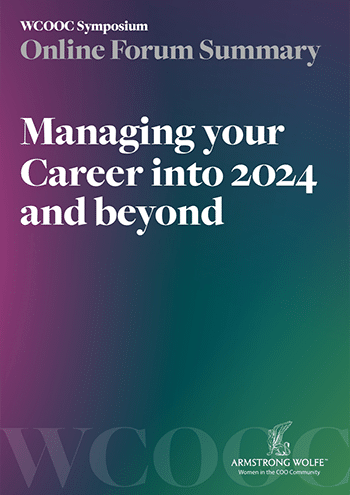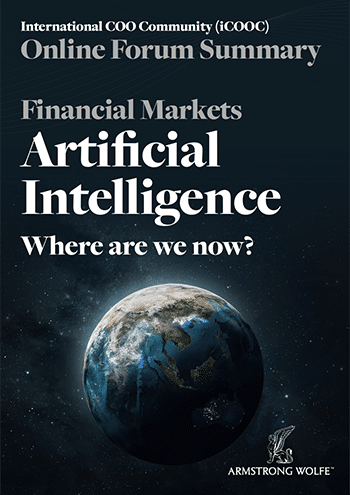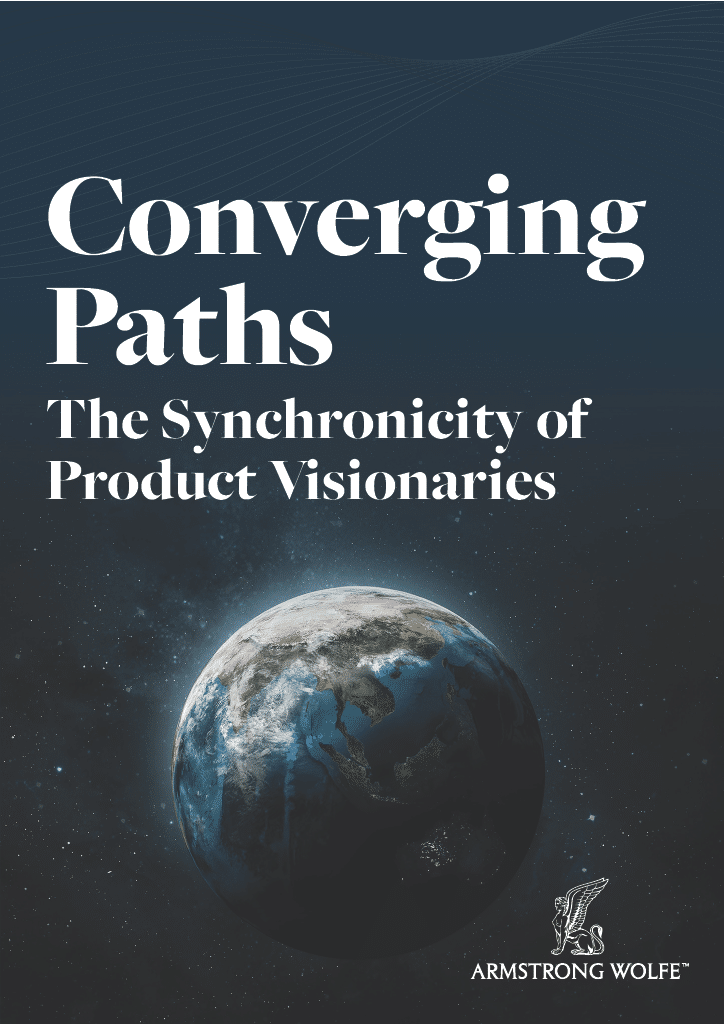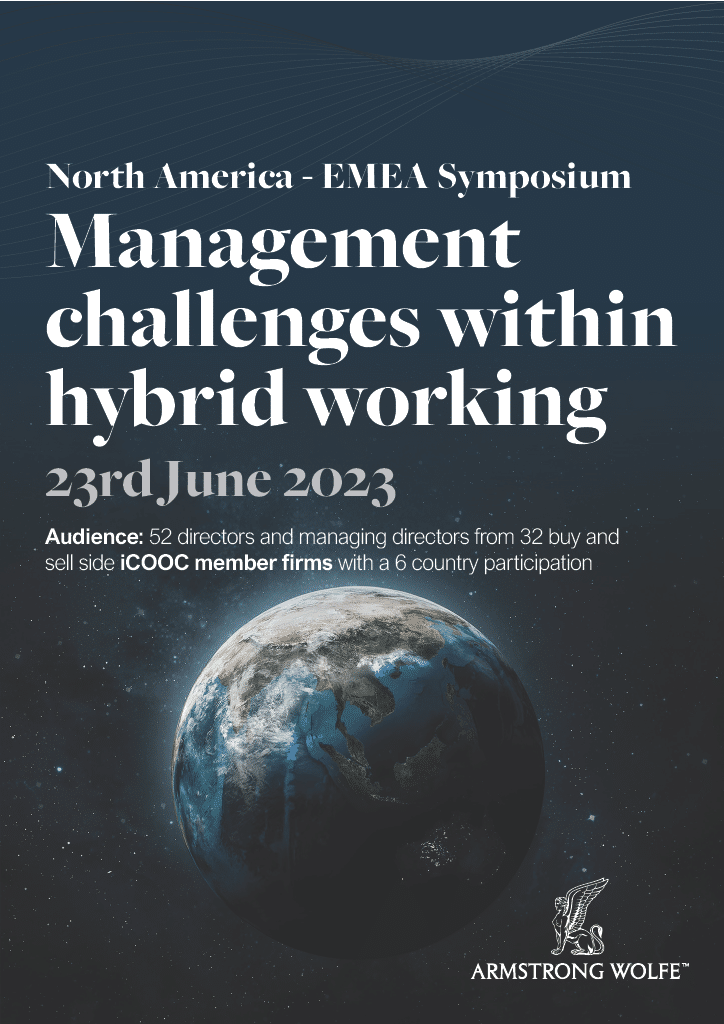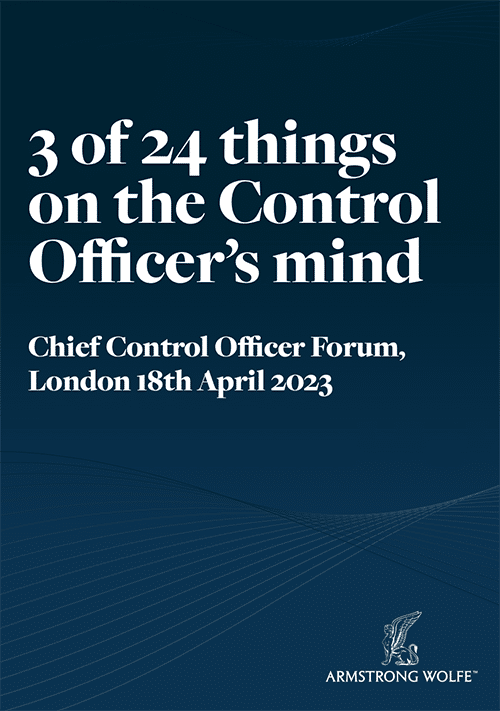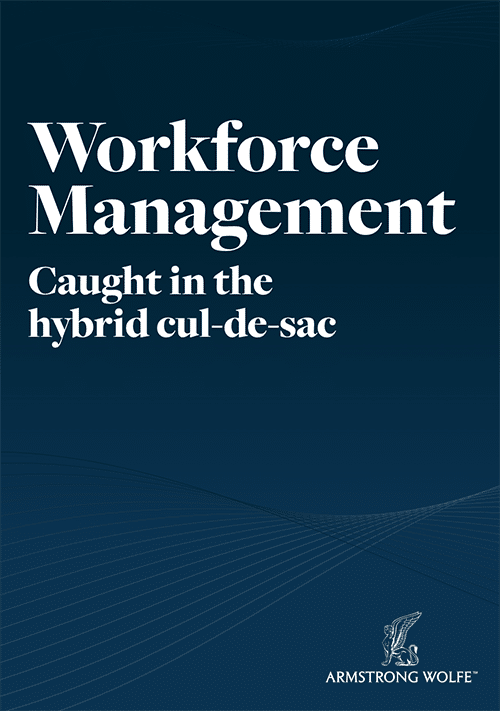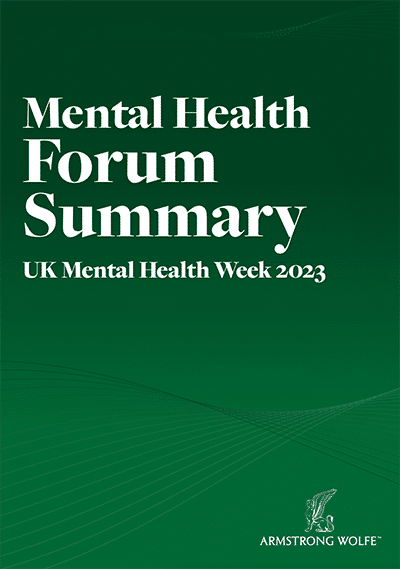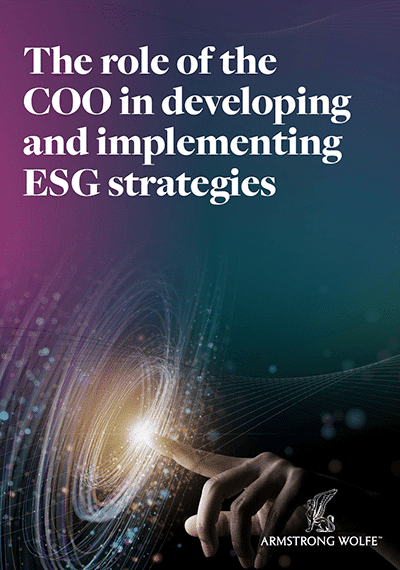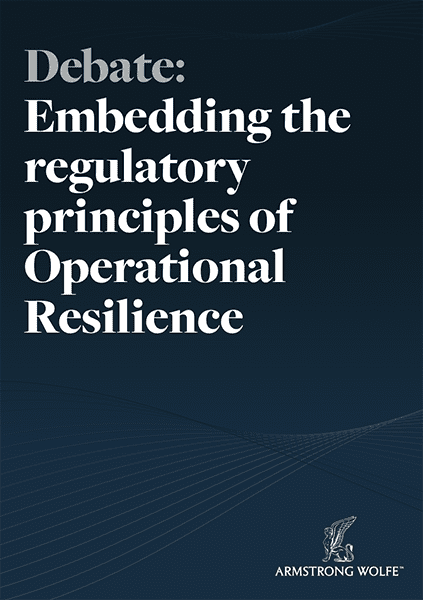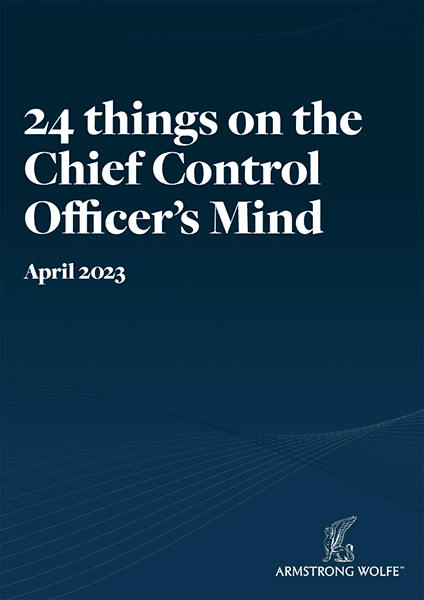POV: A unique opportunity for the COO community to transform the industry
Upgrade (noun) – to improve the quality or usefulness of something, or change it for something newer or of a better standard.
Change (verb) – make (someone or something) different; alter or modify; replace (something) with something else, especially something of the same kind that is newer or better; substitute one thing for (another).
Transformation (noun) – a complete change in the appearance or character of something or someone. (Oxford Dictionary)
The current environment is undoubtedly challenging for banks and asset managers. The behavioural and economic effects of the coronavirus crisis will be profound, and come on top of lingering financial, operational and client pressures.
1st line controls and non-financial risk management practices and technologies across the industry had already entered a new era, with the sector recognising a need to reinvent measurement systems, processes and technologies, involving a major overhaul of associated risk technologies. The pandemic and uniqueness of the situation that has provided a lens equally attentive to technological innovation and the people agenda presents an opportunity to consolidate multiple point solutions, adopt cloud technologies, and revamp and strengthen model implementation technology. Ultimately, this provides an opportunity to automate and industrialise the target-operating model for risk management.
Importantly, however, the industry retains capital. It has a hard-earned reinstated confidence in its ability to be the steward if this capital, its 1st line and compliance functions were well placed and resourced to meet the unforeseen challenges presented by COVID-19 and, most importantly, gain customer support and trust. This means that, with the right strategy, banks and asset managers have an opportunity to succeed in the long-term.
Pursuing advanced technology and digital ecosystems will be key to that success. With these elements in place, banks will cut costs and drive efficiencies, helping them weather any storm and redefine their value to customers in a shifting market.
This is the mid to long-term aspirational landscape, one that the COO is cognisant and has been influential in pursuing partnership with the innovation themes summarised as follows:
• New technologies will drive banking transformation over the next five years
• Artificial intelligence will separate the winners from the losers in banking
• Banks will overhaul their business models to create digital ecosystems
The COO would be delighted to dedicate their time to this futuristic, value creating endeavour, but it is, however, the here and now that fills the in-tray and draws their energies and attention.
The here and now pressures will be resident throughout 2021, but running parallel there exists the opportunity to make the pandemic a watershed moment contributing not just to an evolution but revolution in how the industry works. By embracing technologies and setting policies and opportunities, COOs can pave the way for a different way of working. This in part will be defined by the leadership in place and by those that believe in the Latin proverb, fortune favours the brave.
As one global COO for Markets commented:
“The COOs need a conversation on how we, as a community, should think about different solutions for different cohorts of employees. For example, investment bankers, sales and trading, operations and technology staff might require different medium- and long-term solutions based on business role, regulatory oversight/expectations, and effectiveness of at work vs work at home environment.”
Another added:
“I would welcome the opportunity to be working every day on the tomorrow, but this is not a luxury I have at this moment in time. There are some fundamental questions the COOs must ask themselves. There are many more topics of course but the following three lines are common to all COOs I believe:
• with continuing off premises in banks for many months to come how does the supervision and regulatory expectations and risk appetite change? Conversely, what are the latest hypothesis on new technologies, data consents, supervisory arrangements?
POV: A unique opportunity for the COO community to transform the industry
• more and more first line controls in banks – how are the three lines evolving as a whole – duplication, areas of opportunities, latest technologies to automate evidencing and workflows etc?
• in the context of driving innovation front to back (i.e. aligned and not just in markets type of technologies) what models are bringing the best results? Opportunities to accelerate hybrid pods to drive multidisciplinary teams together. Does the present circumstance and the direction we and the industry are heading require a different type of leader and how can we advance the development of these new leaders vis- a- vis historical silos and resistance?”
Leadership has been investigated in previous POVs, how it is being tested, how empathy is required in the present state and how culture is shaped by leadership. The siblings of culture and purpose find themselves at the heart of the debate, with the dislocation of the workforce shining the light on productivity, and as we enter a possible winter of discontent, cultural fractures may appear that require strong, empathetic leadership to retain cultural cohesion and purpose:
“There is a discussion needed on cultural cohesion – in particular, thoughts on how to create meaningful, lasting relationships in a remote workplace and how to create conditions for “creative collision”. I was reminded of how difficult this is in a remote world when Andrew Ross Sorkin (at the DealBook 2020 Conference) asked Bill Gates and Albert Bourla (CEO of Pfizer) during a panel discussion whether they have “made any new friends” in the past nine months – sadly, they both had not.” (Global Head of Operations)
Options for Managing Change: The Post COVID-19 Planning Cell
The COO is perfectly placed at the centre of the company to manage, drive and execute on the 2021 change agenda. More so, their competencies lend themselves to be effective in the role where the leader must understand and consider the implications for their company front to back, across all businesses and locations.
It will be interesting to see how the COO’s performance will be measured in this new paradigm, when to date they have been measured on the following criteria:
• Increasing efficiency within business operations
• Keeping to the budget and meeting investor demands
• Realising cost saving (and securing future business benefit)
• Performance and agility of the business management and supporting operational function
• Leadership skills and engendering a culture of loyalty performance and innovation
• Improving a company’s ethical standing, especially in relation to controls and regulation
• Strategic planning and a forward looking, innovative mindset
• People, resource, and human capital focus on productivity
• Ability to attract, hire, train and retain people
More so, within these points of reference, the COO’s sphere of influence is 360 degrees, where the opinions of the many sway influence on the view of the performance of the one:
POV: A unique opportunity for the COO community to transform the industry
It is acknowledged, therefore, with the advent of COVID-19, the COO’s role, its focus, and its influence has changed. The empowerment of the COO and moving it from a control, regulatory, cost and efficiencies focused mandate to an empowered, forward looking role will enable CEOs to focus their efforts on strategy, customers and driving outcomes.
To do this, however, the COO needs appropriately skilled and experienced executive resource in support to enable them to meet the demands of an evolving and empowered mandate in a complex, uncertain environment. To address this, in some banks and asset management firms the COO has appointed an experienced business manager, reporting to them, to own and drive change and transformation, in some cases specifically to own the COVID conundrum of managing the business through a period of continued dislocation whilst designing and taking it into a new operating model. To secure the capital to make this appointment, the CEO must share the vision of an empowered COO and link its value to the further release of their own time and attentions to more pressing matters.
In a capital constrained environment, however, the allocation of additional senior headcount may be challenging. One option is to take advantage of the disadvantaged and access the abundance of executive talent out of work. This interim option may be a good route forward, to support the COO through 2021, a finite investment to meet a definitive challenge within a predefined timescale.
In all cases the evolved relationship between the CEO and COO and how the CEO wants to use the office of the COO will define the pace of change and the successes to be realised by the opportunity to transform the business at an accelerated pace in 2021.

